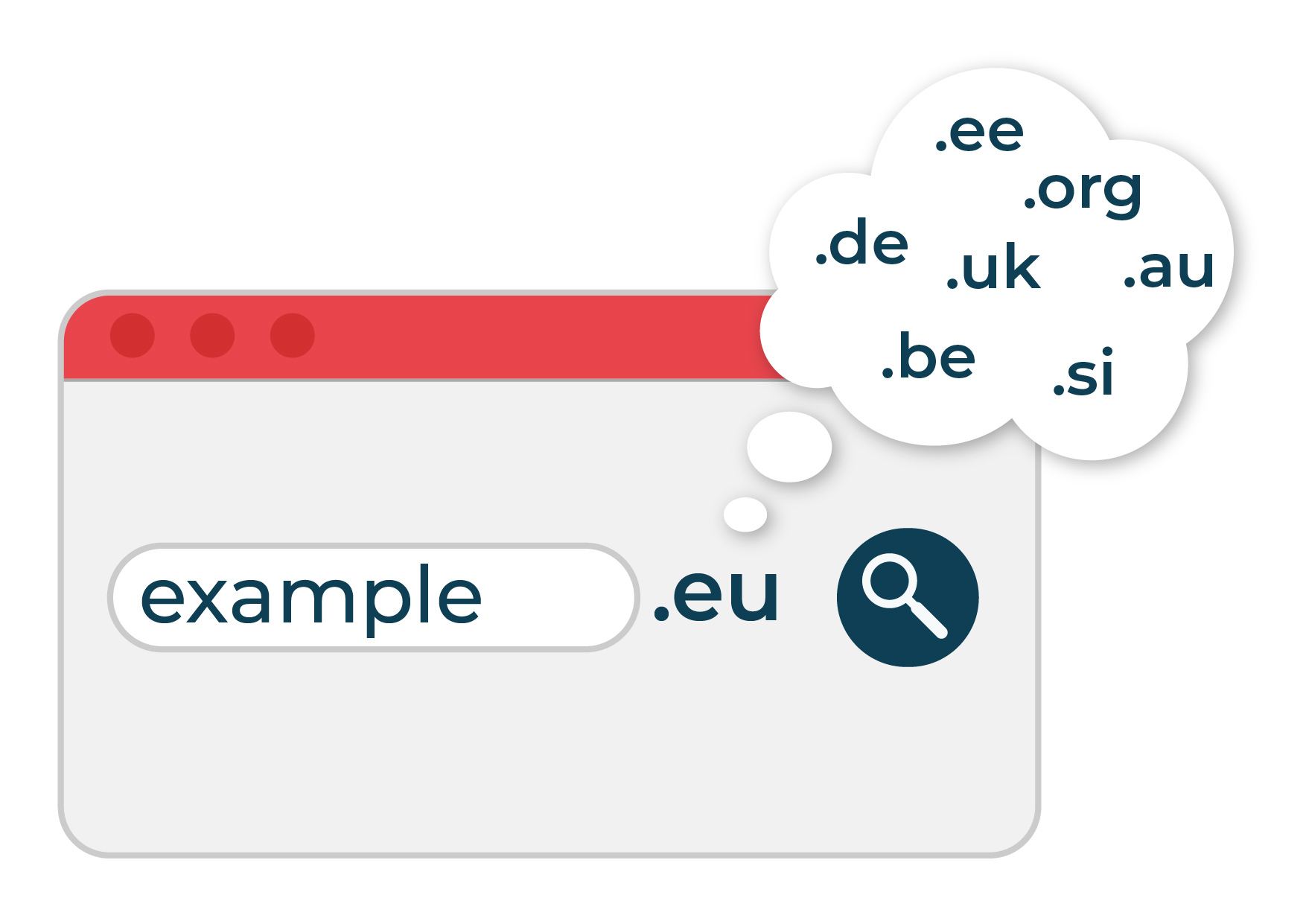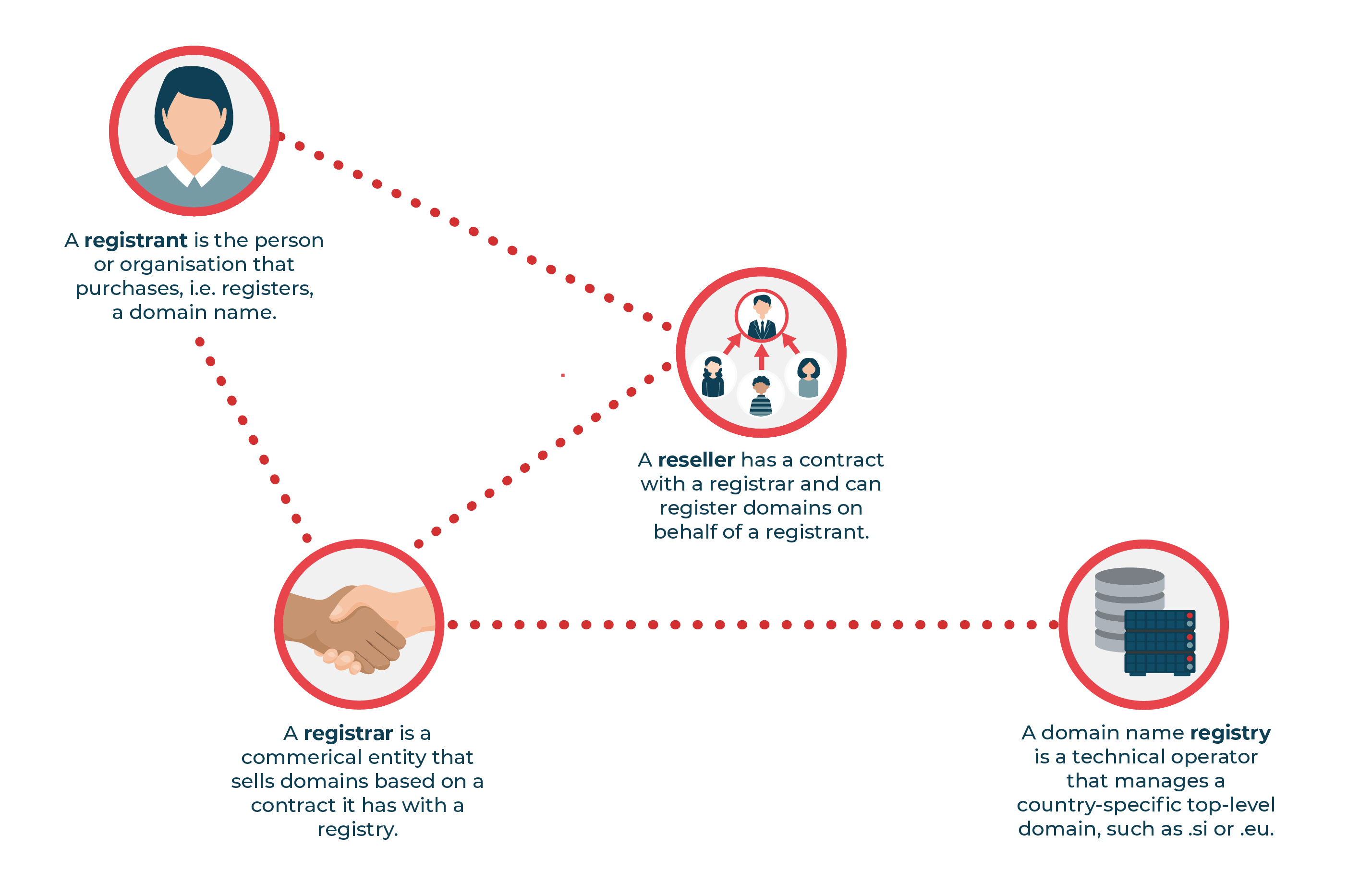Registering a domain is an essential part of establishing an online presence. But how exactly do you register a domain? This article explores the domain registration process, providing an insight into all the actors who are involved, as well as a summary of what happens in the background once you have selected your domain name.
How it works
Step 1: The registrant will choose a domain and check that it is available to register.
The domain registration process starts with performing a search to see if your desired domain name is available.
Most registries (organisations that administer a country’s domain) and registrars (companies that sell domain names) have a search tool on their websites to help you find available domain names.
On a registry’s website, the search tool will often point to a list of the registry’s trusted registrars, which the registrant must go through to register their domain.
In some countries, you can register domain names with characters from different scripts such as Arabic, Chinese, Cyrillic – as well as Latin alphabet characters with diacritics, such as é or ç. These are known as Internationalized Domain Names (IDNs).
Step 2: The registrant will then need to choose a registrar to register the domain.
A registrar is a company that sells domain names (often offering multiple different TLDs), in addition to the other main services it provides, such as web hosting, website building/design or email.
Registrars have a contract with registries, who give them the authorisation to sell their domain names, as long as they fulfil the terms of their contract. A registry will often have hundreds of registrars. This multitude of registrars offers choice to the registrant.
Alternatively, you can buy your domain name from a reseller, which is a third-party company or individual authorised by a domain registrar to sell domain names to end-users.
In some cases, a reseller may act as a broker between the registrant and the registrar, handling the registration process on behalf of the registrant. Though, it is worth noting that while a reseller may facilitate the domain registration process, the ultimate responsibility for the domain and its management remains with the registrant. If any issues arise with the domain, you will need to contact your registrar directly to resolve the issue, even if a reseller was involved in the initial registration.
At this stage, the registrant will be asked to provide their contact information and pay for the registration. In many cases, registrants will also be asked to go through additional checks to prove their identity or to meet other technical or presence requirements.
Each TLD’s specific obligations and requirements can be found on the registry website. To find a list of CENTR member registries with links to their websites, see our Members page.

Step 3: Additional checks and domain activation
If the domain name is available and the registrant passes any additional checks, the registrar will provide the registry with the details of the domain name, and the domain will be added to the registry’s zone file.
The registry’s zone file is a text file that contains the mappings between domain names and IP addresses and other resources. This information is critical for the operation of the DNS, as it enables name resolution for all domain names under the TLD.
The DNS servers will be updated, and the domain name will be mapped to an IP address. The registrant will be notified that their domain has been successfully registered and activated.
It is worth nothing that there is another zone file related to domain names – called the DNS hoster or registrar zone file – which is maintained by the organisation that manages the domain name registration and DNS hosting for a particular domain name. This zone file contains domain content, including IP addresses, hostnames, mailserver addresses and more.
Step 4: Domain renewal
After one year (or depending on the domain registration period) the registrant can renew their domain name. If they do, nothing changes. If they do not renew, the domain name is eventually released, and can then be purchased and registered by anyone (often after a quarantine period).
Domain names and intellectual property rights
In principle, any domain name is available for registration unless it breaks national laws. Registered trademarks, however, are protected online and in the domain name sphere.
Even where a trademark owner has not registered a corresponding domain, their trademark is still protected.
While registering a domain name is not necessarily considered an infringement on intellectual property rights (IPR), the registry can always be made aware later of an IPR infringement associated with the use of a domain name.
Though ccTLDs do not decide whether a domain name infringes on IPR, many European ccTLDs explicitly prohibit using domain names that may violate IPR in their terms and conditions. In addition, many registries have alternative resolution procedures (ADR) in place, which enable potential IPR disputes regarding domain names to be resolved through third-party experts without litigation.

